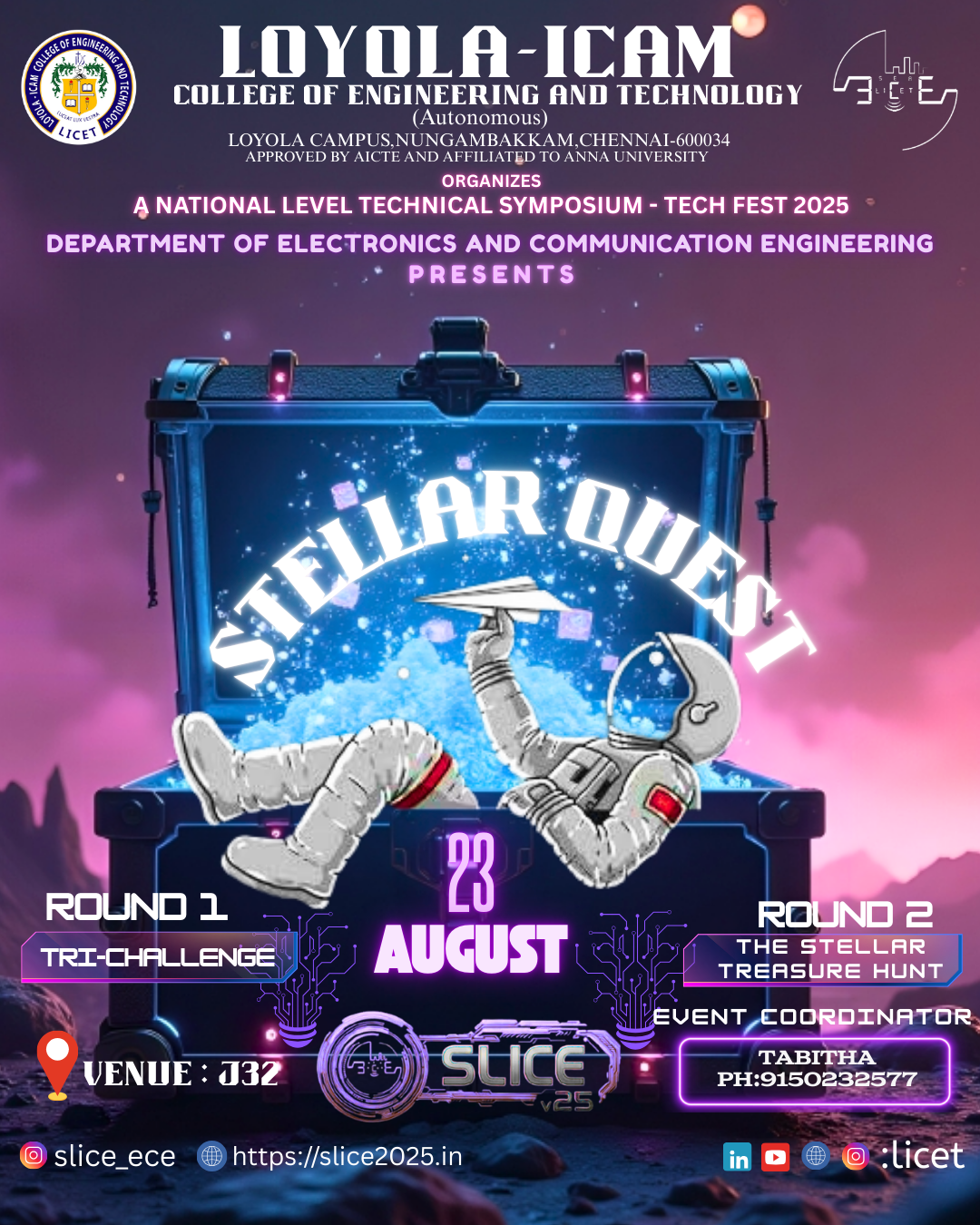Stellar Quest is a thrilling two-round, space-themed technical challenge for Electronics and Communication Engineering students.It tests logical reasoning, electronics knowledge, coding skills, and creativity. The event begins with a multi-skill technical challenge, followed by an exciting treasure-hunt-style round where teams race to collect components, design an SDG-aligned problem statement, and propose an innovative working solution.
Flow of Event
Round1 – Written Test + Component Selection (Elimination Round)
The Tri-Challenge (Elimination Round)
🛰️Aptitude (basic to medium level).
🛰️Circuit Theory (basic to medium level).
🛰️Coding (C and Python).
🛰️Format: Written test with problem-solving questions across all topics.
🛰️Component Selection Process:
🛰️Top teams qualify for Round 2.
Round2:
The Stellar Treasure Hunt & Solution Pitch
🛰️Qualified teams race to collect three critical components — Input, Processor, and Output — from venues J32, D22, and E15 by solving clues.
🛰️The first team to reach each venue receives the highest-grade component; later arrivals receive lower-grade or no components.
🛰️After collecting all components, teams create a problem statement aligned with a Sustainable Development Goal and propose a working solution integrating their components.
🛰️Solutions are presented to judges for evaluation.
🛰️Top 3 teams are declared winners based on combined treasure hunt performance and solution quality.
Judging Criteria:
🛰️Round 1: Points based on number of correct answers, then time taken, then bonus challenge results.
🛰️Round 2: Speed and accuracy in completing the treasure hunt, quality of the SDG-aligned problem statement, and feasibility of the proposed solution.
🛰️Final winners are decided based on Round 2 scores.
